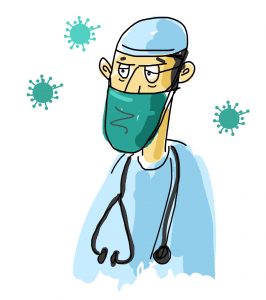
Have you ever heard the phrase, “gap in treatment?” If you’re a normal person, probably not. If you’re a personal injury attorney, you’ve probably heard it more times than you care to remember.
Here’s how it works: Say you’re involved in an accident. Unfortunately, you hurt your knee. You go to the emergency room, they take an x-ray, give you some pain relievers and send you home. You follow up with your primary care doctor, maybe you go to physical therapy for a few weeks.

You finish physical therapy, but you still have pain in your knee. You still have trouble sleeping. You’re still unable to play with your grandchildren the way you used to.
But nothing seemed to work, so you figure there’s nothing more that can be done from a medical standpoint.
So you tough it out. You decide to live with the pain. You do your best for a few months without seeking any further medical treatment.
That is, until you can’t do it any more.
The pain, the limitations, the frustration, the lack of sleep, all become too much. You decide to see a different doctor. This doctor suggests you have an MRI exam. So you get the MRI.
Turns out you need surgery. So you get the surgery, you do another round of physical therapy, and guess what? The pain’s gone! You can sleep again! After some rehab, you can enjoy time with your loved ones like you used to.
After all this, you tell your personal injury attorney about your experience. Your attorney is the one who’s going to get you compensated for all your medical treatment, your therapy, your pain and suffering, your sleepless nights, the time you lost with your family.
And that’s when you learn what a “gap in treatment” is. Normally, you enjoy learning new things.
But not this time.
You learn that the three months you decided to tough it out without medical treatment — your gap in treatment — likely means you will not be compensated for your surgery and rehabilitation expenses, your pain and suffering, the loss of your normal life, and everything else that occurred during and after the gap.
The reason gaps in treatment hurt your case is because juries in personal injury cases rarely award damages for anything after an injured person stops treating. And that’s even if the person resumed treatment later on.
In a personal injury case, it is the plaintiff’s (the injured person’s) legal obligation to prove that the damages she sustained were related to the accident. In other words, the damages must be caused by the defendant in the case.
And if a jury isn’t likely to award damages for the post-gap treatment, the insurance company isn’t going to consider those damages either when your attorney tries to settle the case.
The longer the time between treatments — the greater the gap — the more difficult it is to prove that the later treatment is related to the accident in question. A one to two week gap is probably okay. Three to four weeks and beyond is increasingly difficult.
Here’s another concept you won’t want to learn the hard way: It’s called “failure to mitigate damages.”
Under the law, a plaintiff in a personal injury case has an affirmative duty to mitigate her damages — in other words, to do everything she can to get better.
So if you take a few months off from medical treatment, the defense attorney, or the insurance company, will argue that you failed to mitigate your damages.
In other words, the defendant or insurance company has you at a disadvantage in two different ways: Your gap in treatment means the later treatment wasn’t related to the accident. But even if it was, your failure to obtain treatment during that time — your failure to mitigate your damages — caused or contributed to the need for surgery later on.
If you had not stopped treating, your damages would not be as severe. Either the gap in treatment or the failure to mitigate damages — or both — will likely limit the amount of money a jury will award you.
The moral of this sad story? Don’t give up on your treatment if you’re still having issues. Don’t wait to get a second opinion if you think your doctor may be missing something.
If you’ve been injured, under the law, it is your job to obtain the proper treatment to get better. Do your job. Do everything you can to get better. Don’t be a hero and tough it out.
If you believe you or someone you know has been injured, contact Chicago personal injury attorney Jordan Marsh for a free consultation at (224) 220-9000, or by email at jordan@jmarshlaw.com.
The information provided on this website does not, and is not intended to,
constitute legal advice; instead, all information, content, and materials available on this site are for general informational purposes only. Use of and access to this website or any of the links contained within the site do not create an attorney-client relationship between you and our office.